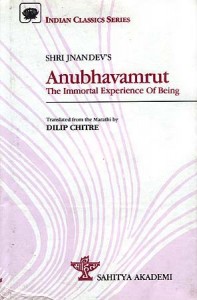Search results for raja yoga (74)
Today is the 1st-ever International #YogaDay!
I also emphasised on greater synergy between Digital India initiative & programmes related to Sarva Shiksha Abhiyan. http://nm4.in/1Iuf4Jt
To create a happier humanity we have to pay more attention to our inner values, whether we are religious or not.
News Lens: BRICS Bank to commence business on 7 July http://bit.ly/1Covr8i
News Lens: World Bank staff survey highlights discontent with senior management http://bit.ly/1GigF4r
#LT–#CN economic cooperation intensifies. Discussed more possibilities with #China’s vice Prime minister Zhang Gaoli
The Greek government still wants to party but the bills have to be paid by somebody else #EUCO
At the meeting on Sarva Shiksha Abhiyan, called for identifying & embracing key best practices in education that can benefit youngsters.
Am sure you will enjoy reading about highlights of #YogaDay celebrations across the world. http://www.narendramodi.in/category/media-coverage …
Met top officials from Soft Bank Corporation, Bharti Enterprises & Japan Bank for International Cooperation.
 Khenchen Lama added 30 new photos.
Khenchen Lama added 30 new photos.Today I’m going to teach Guru Yoga meditation and empowerment. I’d like to take this opportunity to say this organization is really good and thank you Palden Palma. All of you are good people and thank you. To begin, I’d like to give you some information about Guru Yoga meditation so you understand what this is and it will be easy for you. It is very important to understand this. Guru is a Tibetan name for a very high Enlightened Master. You find an Enlightened Master and you…
170,000+ tweets for 1st-ever #YogaDay! Thanks for all the posts. See some highlights here: http://j.mp/1CmjvDL
My message on first #InternationalDayofYoga @narendramodi @RashtrapatiBhvn @SenseandC_sense @IndianEmbKabul
Feeling relaxed after taking part in the mega yoga event organized to mark International Yoga Day by the Indian Embassy
My prayers are with those injured. We stand shoulder to shoulder with the people of Afghanistan in this hour.
The attack on the Afghanistan Parliament is a despicable & cowardly act. There is no place for such attacks in a democracy.
We must take forward the enthusiasm seen during #YogaDay & inspire people to make Yoga a key part of their daily lives. @dilmabr
Thank you President Rousseff for the kind words on Yoga & #YogaDay. The spirit with which Brazil joined Yoga Day is appreciable. @dilmabr
![]() Dilma Rousseff @dilmabr
Dilma Rousseff @dilmabr
Cumprimento o primeiro-ministro indiano @narendramodi pelo Dia Internacional da Ioga, q passa a ser celebrado no dia 21 de junho. #YogaDay
Cada vez + brasileiros praticam ioga no seu dia a dia, o q traz + harmonia, + equilíbrio e uma interação + forte entre nossos povos.
O Brasil apoiou a Resolução da #ONU c/ a confiança de q a ioga contribui p/ a saúde e o bem estar de um número crescente de pessoas #YogaDay
I congratulate each & every person who practiced Yoga today & made the 1st #YogaDay a success. http://nm4.in/1GsJx9e The world has celebrated #YogaDay with immense enthusiasm. Across the world, people have joined in large numbers. This is a great moment.
35,985 people belonging to 84 nations joined the #YogaDay programme at Rajpath. 2 world records have been set. Yoga truly unites.
Was very happy to see the #YogaDay programme at the @UN, Secretary General Mr. Ban Ki-moon doing Yoga & @SrSri guiding there.
By celebrating #YogaDay, we are sending a powerful message of men & women living in harmony with each other and in harmony with nature: MEA
Yoga- it means to join and unite. #YogaDay is a perfect platform to bring the world together: MEA @SushmaSwaraj http://webtv.un.org
On 27th Sept PM @narendramodi first made the proposal of a #YogaDay at the UN General Assembly. I thank member states for their support: MEA
An honour for me to join all of you on this day: MEA @SushmaSwaraj on #YogaDay at the @UN
Tremendous #YogaDay buzz on social media…people sharing experiences & showing enthusiasm. http://yogaday.narendramodi.in/social-buzz
Have a look at how people across India & the world are marking the 1st #YogaDay. http://yogaday.narendramodi.in/yoga-clicks
Sharing my speech at the International Conference on Yoga for Holistic Health. http://nm4.in/1dWQEQE #YogaDay
The Indian Navy marks #YogaDay. A wonderful effort. http://indiannavy.nic.in/news-events/yoga-across-oceans-day-harmony-indian-navy-0 …
It’s the first #InternationalYogaDay – watch @narendramodi lead a mass yoga demo of 35,000 people. #YogaDay https://amp.twimg.com/v/fd0fc0e3-5c4f-4dd3-b21d-554aaf7eae3d …
Sept-Oct 2015 – Programme de retraites http://bit.ly/1I2vBrZ
In Yoga Advanced level is „Meditation“ Dhynam Sarvathra sadhanam 🙂
Hon’ble Prime Minister of India Shri Narendra Modi’s message on#YogaDay
#InternationalNationalYogaDay #India #UnitedNations #PrimeMinister#ShriNarendraModi
#YogaDay
Live streaming of First International Day of Yoga celebrations at United Nations, New York
Link: mymea.in/5u7
Indian Diplomacy
Today is the 1st-ever International #YogaDay! Join a global event near you – details: http://j.mp/1MEPqpe

News Lens: Why World Bank praise for a profit-making education firm in Kenya was a bad idea http://bit.ly/1H30yxh
NEW Announcement |Weekly Updates| – 06/04/2015-Climate Change and Himalaya – http://eepurl.com/bi1-vf
I wish all the best to my brothers and sisters of Darjeeling. We want the Hills to keep smiling
Heads of Four Schools of Tibetan Buddhism and Bon Tradition Condemn Dolgyal Followers http://goo.gl/fb/B6d5Qz
His Holiness the Dalai Lama graces the conclusion of Tibetan religious conference http://goo.gl/fb/QoENvz
ACHTUNG ORTSWECHSEL: BERLIN Mitte: Gita – Abend Eintritt: Spendenbasis http://www.vedic-guide.de/veranstaltungen
You’ve been quoted in my #Storify story „Today is the 1st-ever International #YogaDay! “ http://sfy.co/h0m0t
SURYA JYOTHI YOGA VEDANTA CENTER
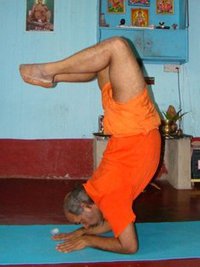
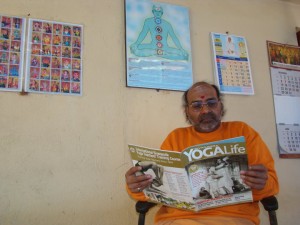
One of the senior disciples of Swami Vishnudevananda and who spent 18 years with gurus mission International Sivananda Yoga Vedanta centre as a Director in different branches. Swamiji is the author of poetry Kaliyuga Vahini in Kannada language. His poetry is coming in all major languages shortly. Swamiji is teaching yoga and Meditation and conducting Satsanga and giving spiritual guidelines to sadhakas all over the world. Swamiji is traveling across the globe in spreading Gurus message.
Sri Swami Krishnananda Saraswati Maharaj (April 25, 1922 – November 23, 2001) was a Hindu saint. He was a foremost disciple of Swami Sivananda and served as the General Secretary of the Divine Life Society in Rishikesh, India from 1958 until 2001.He was one of the most important theologians and philosophers of the 20th century. Author of more than 200 texts, Krishnananda wrote and lectured prolifically on yoga, religion, and metaphysics. His lectures, though delivered extempore (without rehearsal), were known for their structure, style and sophistication, and have been widely published in text form. The works for which Krishnananda is best known are The Realization of the Absolute, The Philosophy of Life, and The Philosophy of Religion. Read More > HERE <
Yoga is a divine knowledge taught by Rishi’s to gain Physical, Mental, Spiritual well being and to attain our Divine quality through following the eight limbs of Raja Yoga called Astanga Yoga. Yoga means union of human sole with the supreme – sole or Almighty god means join Divine & human spirit. This is a Process which liberates the human soul from the bondage of Maya (attachment to worldly things and makes the sole free from rebirth) Only Maya is a strong bondage.
The ultimate Aims of Yoga practice is to get Self –Realization to merge our tiny spark of soul in the ocean of God consiousness.To remove our ignorance due to Maya, to know our own ego, to get freedom from bondages of birth and deaths, to remain in permanent eternal peace, bliss and joy and to realize the complete ultimate knowledge of everything in the universe we should practice this techniques with devotion, faith and proper understandings . Without devotion we never reach any where in this practice.
Love yoga? Want to get started? Become a teacher?
SURYA JYOTHI YOGA CENTRE offers an amazing range of yoga retreats and trainings for people at all levels of experience.
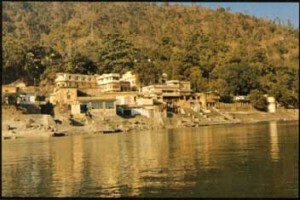
Sivananda Ashram (Headquarters of The Divine Life Society) Rishikesh, Himalayas, India.
The Divine Life Society was founded by the great Saint and Sage of modern times, Swami Sivananda, in the year 1936. It was founded for resuscitating the higher values of life beyond the limitations of perceptional and cognitional evaluations of life. The Founder’s main intention was to awaken humanity towards the ways and means of imbibing in one’s life the characteristics of Ultimate Reality, veritably God-realisation.
Towards this end a vigorous disciplinary process has to be undergone by imbibing in one’s personal life the other associated values, such as the social, ethical, and austere principles, all which have to be set in tune harmoniously with everything that is considered as part of one’s life at any stage of one’s existence in this world. This is briefly the great vision of the Founder, Swami Sivananda.
All material on this website is copyright. This website is independent of the Divine Life Society.
- SWAMI SIVANANDA – YOGA IN DAILY LIFE <
- Ayurveda – H.H. Swami Sivananda Maharaj <
- H.H. SWAMI SIVANANDA – SELFLESS SERVICE <
- Meet Surya Jyothi Yoga Vedanta Center, studies, friends at fb <
- Meet Swami Sivananda – Divine Life Society, studies, friends at fb <
- AN APPEAL FOR YOGA GURUKULAM CONSTRUCTION PROJECT at fb <
IYENGAR YOGA & SAVE GANGA MOVEMENT
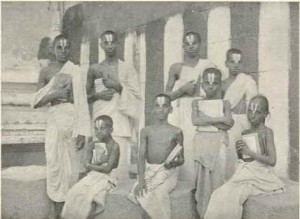
Iyengar Vedic Students 1909
The World’s First Sage Patanjali temple
„Health is firmness in body, stability in mind, and clarity in thinking. If a mirror is clean, it reflects objects clearly….health is the mirror of man.“ – B.K.S. Iyengar
Bellur Krishnamachar Sundararaja Iyengar (Kannada: ಬೆಳ್ಳೂರ್ ಕೃಷ್ಣಮಾಚಾರ್ ಸುಂದರರಾಜ ಐಯಂಗಾರ್, Tamil: பெல்லூர் கிருஷ்ணமாச்சார் சௌந்தரராஜா ஐயங்கார்), (generally known as Yogacharya B. K. S. Iyengar) (Born December 14, 1918 in Bellur, Kolar District, Karnataka, India) is the founder of Iyengar Yoga. He is considered one of the foremost yoga teachers in the world and has been practicing and teaching yoga for more than 75 years. He has written many books on yogic practice and philosophy, and is best known for his books Light on Yoga, Light on Pranayama, and Light on the Yoga Sutras of Patanjali. He has also written several definitive yoga texts. Iyengar yoga centers are located throughout the world, and it is believed that millions of students practice Iyengar Yoga.
He was awarded the Padma Shri in 1991, and the Padma Bhushan in 2002. In 2004, Iyengar was named one of the 100 most influential people in the world by Time Magazine. Read More: > HERE <
The Patanjala Yoga Kendra was established in 1993 on the banks of the Holy River Ganges in Rishikesh, the world capital of Yoga. The method of Yoga that is taught is Iyengar Yoga, as developed and taught by Shri Guruji, B.K.S. Iyengar, the world-famous Yoga Teacher. Guruji’s method is firmly based in the ancient Indian tradition of Yoga as defined in the Yoga Sutras of Patanjali. Usha Devi is the resident Yoga Instructor.
Iyengar Yoga teaches strength and stamina, flexibility and balance, concentration and meditation. Iyengar Yoga begins with physical awareness, but goes beyond to embrace emotional and spiritual growth. As students learn to extend consciousness to each part of their bodies, they experience a concentrated focus on the moment. In time, this concentrated focus (Pratyahara) becomes an integral part not just of a yoga practice, but of daily life.
Welcome to Save Ganga Movement – A Gandhian Non-violent Movement to Save the Ganga, symbolizing all rivers and water bodies and the Giriraj Himalayas, symbolizing all mountains, forests and wildlife. Gandhi symbolizes a culture of Truth and non-violence, i.e. a culture of pursuit of ethical perfection as the ultimate goal of life and pursuit of selfless ethical life of universal love as it’s means. The Surest and Perhaps the Only Solution to Our Impending Catastrophic Global Ecological Crises: Go Through Gandhi the Apostle of Truth and Non-violence of our Age.
- IYENGAR – BELLUR SCHOOL TRUST (BKSSNT)<
- Monasteries Environmental Himalayaprotection <
- SAVE MOTHER EARTH, SAVE GANGA & YAMUNA <
- Meet Iyengar Yoga, studies, friends, fans at fb <
- Meet Save Ganga Movement, friends at fb <
- Meet Save the Ganga (Ganges) River, friends at fb <
- Meet Save Yamuna to save Vrindavan! at fb <
- Meet M.K. Gandhi Institute for Nonviolence, studies, friends at fb <
Yoga & Buddhism: Similarities & Differences
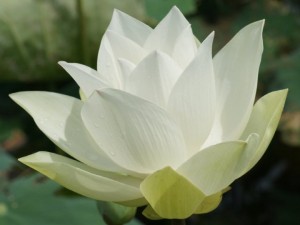
> TYS – Hindu, Buddhist, Jaina Yoga <
Yoga (Sanskrit, PÄ�li: योग yóga) refers to traditional physical and mental disciplines originating in India. The word is associated with meditative practices in Hinduism, Buddhism and Jainism. In Hinduism, it also refers to one of the six orthodox (Ä�stika) schools of Hindu philosophy, and to the goal toward which that school directs its practices. In Jainism it refers to the sum total of all activities—mental, verbal and physical.
Major branches of yoga in Hindu philosophy include Raja Yoga, Karma Yoga, Jnana Yoga, Bhakti Yoga, and Hatha Yoga.Raja Yoga, compiled in the Yoga Sutras of Patanjali, and known simply as yoga in the context of Hindu philosophy, is part of the Samkhya tradition. Many other Hindu texts discuss aspects of yoga, including Upanishads, the Bhagavad Gita, the Hatha Yoga Pradipika, the Shiva Samhita and various Tantras. Read More: > HERE <
Yoga and Buddhism: Similarities and Differences
Written by Dr. David Frawley
Yoga and Buddhism are sister traditions which evolved in the same spiritual culture of ancient India. They use many of the same terms and follow many of the same principles and practices. For this reason it is not surprising that many of us born in the West, particularly after an initial exposure, are apt to regard Yoga and Buddhist teachings as almost identical.
We may want to combine their teachings or practices accordingly, as if there were no real differences between them. The differences that have existed between the two systems historically, which have kept them apart as separate traditions, are less obvious to us in the West than are their commonalities. Or those who study one of these traditions may be inclined to see the other as a borrowing from it. Those who study Buddhism may find so much similarity in Yoga that they suspect a strong Buddhist influence on Yoga. Those who study Yoga may find so much similarity in Buddhism that they see a strong yogic influence on Buddhism.
However, the tendency to find commonality between these two great spiritual traditions is not limited to the West. Swami Vivekananda, the first great figure to bring Yoga to the West, examined the Buddhist Mahayana scriptures (Sutras) and found their key teachings and those of Vedanta that he followed to be ultimately in harmony. In recent years with the influx of Tibetan refugees into India, including the Dalai Lama, there has been a new dialogue between the two traditions that is bringing about greater respect between them. Tibetan Buddhists often appear at Hindu religious gatherings and partake in all manner of discussions.
Nor is the attempt to connect the two traditions limited to modern times. Various synthetic Hindu-Buddhist teachings have existed through history. Buddha himself was born a Hindu and some scholars have argued that Buddhism as a religion apart from Hinduism did not arise until long after the Buddha had passed away. A Shiva-Buddha teaching existed in Indonesia in medieval times, and for many Tantric Yogis it is difficult to tell whether they were Hindus or Buddhists. Buddha became accepted as an avatar of Vishnu for the Hindus during the medieval period, and most Hindus still consider that we live in the age of the Buddha-avatar. Most Hindus accept Buddha as a great teacher, even if they do not accept all Buddhist teachings. Full Article: > HERE <
- Meet Buddhism studies, groups, friends, at fb <
- Meet Hinduism studies, groups, friends, at fb <
- Meet Jainism studies, friends, fans, at fb <
- Meet Dr. David Frawley, AIVS, studies, friends, at fb <
- Meet Traditional Yoga Studies, friends at fb <
Guru Shishya Tradition in Yoga, Veda, Arts
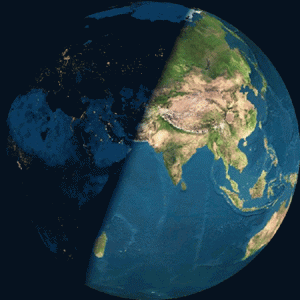
http://eastmeetswestmusic.com/
The guru-shishya tradition, lineage, or parampara, denotes a succession of teachers and disciples in traditional Indian culture and Dharmic Traditions such as Sanatana Dharma, Sikha Dharma, Jaina Dharma and Buddha Dharma. It is the tradition of spiritual relationship and mentoring in traditional Hinduism where teachings are transmitted from a guru (teacher, गुरू) to a ‚śiṣya‘ (disciple, शिष्य) or chela. Such knowledge, whether it be vedic, agamic artistic, architectural, musical or spiritual, is imparted through the developing relationship between the guru and the disciple. It is considered that this relationship, based on the genuineness of the guru, and the respect, commitment, devotion and obedience of the student, is the best way for subtle or advanced knowledge to be conveyed. The student eventually masters the knowledge that the guru embodies. The word Sikh is derived from the Sanskrit word shishya. It is related to the Brahmacharya. Read More: > Here <
Rashtriya Ayurveda Vidyapeeth was established on 11th Feb., 1988 with one of the objectives of promoting knowledge of Ayurveda and started functioning since 1991. The Vidyapeeth initiated the course of Member of RAV with an effort to revive the traditional method of Gurukula system of informal education of India i.e., Guru Shishya Parampara to Ayurvedic graduates after formal education. As people are aware, the present classical texts of Ayurveda, Charaka Samhita, Sushruta Samhita, Ashtanga Hridaya etc. are believed to be the outcome of such informal education. This kind of study is lacking at present in the modern educational institutions where the courses are bound by fixed syllabus, duration of time and many subjects to learn.
Guru Shishya Parampara is the traditional method of residential form of education wherein the Shishya remains with his Guru as a family member and gets the education as a true learner. This system gradually vanished with the disappearance of Gurukuls. However, it is still a very effective means of transfer of knowledge from the Gurus (teachers) to Shishyas (students). RAV is making efforts to revive the system through two types of courses.
In colleges and institutions only a relevant portion of the Samhita (texts of Ayurveda) is being taught in the form of syllabus. Guru Shishya Parampara of RAV facilitates the students to study whole text and get adequate knowledge of Samhita and its Teeka (commentary) and traditional skill for the Ayurvedic clinical practice. The Shishyas get sufficient time for interaction and discussion on the issues taken for study.
COURSES:
- (A)acharya guru shishya parampara, (One-year course of Member of Rashtriya Ayurveda Vidyapeeth) (MRAV)
- (B)Chikitsak guru shishya parampara, (One-year/Six month’s course of Certificate of Rashtriya Ayurveda Vidyapeeth) (CRAV)
- Read More: > HERE <
„The main features of a fruitful Guru-Shishya relationship led to (1) purity of mind and body, humility, a sense of service, and a devotional and spiritual attitude; (2) a thorough grounding of technique and science of music; (3) the gradual development of the disciple as he sits behind his guru at concerts and joins in when asked, but does not perform by himself until his guru finds him fit to do so; and (4) freedom from economic worries by the disciple, living and serving his guru, as a member of his family.“
Pandit Ravi Shankar (My Music, My Life)
PUBLICATIONS: Vidyapeeth has been publishing certain books of Ayurveda, which are found suitable for general public in creating awareness, and also books for Ayurvedic professionals. The Vidyapeeth also publishes the theses of its students after necessary review and recommendation by the Expert Committee and approval by the Governing Body. Further, the Vidyapeeth brings out a Souvenir, containing selected full papers, at the time of Conference/Seminar conducted every year.
SEMINARS/CONFERENCES: Vidyapeeth conducts a Conference/Seminar/Workshop every year on a topic that requires discussion and exchange of the views and clinical experience on the diagnosis and treatment of the disease, mostly the health problems not easily managed by majority of Vaidyas without side effects. So far Conferences/Seminars have been conducted on Kshara Sutra, Heart diseases, Ayurvedic Education, Training and Development, Nadi Vigyan, Fast Acting Ayurvedic Medicines and Techniques, Cancer, Shothahara Avam Jeevanu Nashak Ayurvedic medicines, AIDS, Thyroid disorders, Rasayana, Ayurvedic management of kidney and urinary disorders , Management of Hepato-biliary & Splenic disorders through Ayurveda, Diabetes Mellitus, Mental Health and Vatavyadhis.
AWARD OF FELLOW OF R.A.V.: For achieving one of its objectives, the Vidyapeeth awards Fellowship to the eminent scholars of Ayurveda and practitioners of various traditional Ayurvedic techniques in recognition of their scholarly expertise and contribution in the field of education, research, patient care and literature. In the year 1992 the Vidyapeeth awarded 50 Foundation Fellowships to eminent Vaidyas. Thereafter, a maximum of 30 fellowships are being awarded every year. This is an honorary recognition and a felicitation with a citation, a shawl and a kalash/memento presented to each awardee in the Convocation of RAV. As per rules of the Vidyapeeth, the total number of fellows at any time shall not exceed 300. Every year the Governing Body determines these fellowships on the basis of the bio-data of scholars. So far, 224 scholars have been awarded Fellow of Rashtriya Ayurveda Vidyapeeth (FRAV) Annexure – IV.
CONVOCATION: In order to fulfill the objectives of the Vidyapeeth viz. to institute due recognition to successful candidates and to recognize and encourage merit in various branches of Ayurveda, the Vidyapeeth holds Convocation every year for awarding certificates to passed out students and to felicitate eminent scholars and Vaidyas with Fellow of Rashtriya Ayurveda Vidyapeeth (FRAV) for their significant contribution for the progress of Ayurveda in the fields of education, research, literature and health care.
A guru (Sanskrit: गुरु) is one who is regarded as having great knowledge, wisdom and authority in a certain area, and who uses it to guide others (teacher).
In sanskrit gu means darkness & ru means light. As a principle for the development of consciousness it leads the creation from unreality to reality, from the darkness of ignorance to the light of knowledge. In its purest form this principle manifests on earth as a divine incarnation (saint), a person with supreme knowledge about God and all creation. Other forms of manifestation of this principle also include parents, school teachers , non-human objects (books) and even one’s own intellectual discipline.
The syllable gu means shadows
The syllable ru, he who disperses them,
Because of the power to disperse darkness
the guru is thus named.
– Advayataraka Upanishad 14—18, verse 5
In the religious sense the term is commonly used in Hinduism and Sikhism, as well as in Buddhism and new religious movements.
Finding a true guru is often held to be a prerequisite for attaining self-realization. Guru Nanak, founder of the Sikh religion said: „Even if a thousand suns and moons rose, they would be unable to remove the darkness of ignorance within the heart. This can only be removed through the grace of the Guru.“
„Guru“ also refers in Sanskrit to Brihaspati, a divine figure in Hinduism. In Vedic astrology, guru or Brihaspati is believed to exert teaching influences.[clarification needed] Indeed, in many Indian languages such as Hindi, the occidental Thursday is called either Brihaspativaar or Guruvaar (vaar meaning day of the week).
In contemporary India, Indonesia and the Philippines, the word „guru“ is widely used with the general meaning of „teacher“. Guru in Buddhism, Hinduism, Sikh…Gurukulam System in Tradititional KALARI… Read More: > HERE <
In Western usage, the meaning of guru has been extended to cover anyone who acquires followers, though not necessarily in an established school of philosophy or religion. In a further Western extension, guru is used to refer to a person who has authority because of his or her perceived secular knowledge or skills, such as in business.
Weblinks: > yoga-vidya.de < ( no english translation avaiable) – ….Ishwara selbst ist der ursprüngliche Guru (Lehrer). Unsere Guru Parampara (Schüler-Lehrer-Tradition) beginnt bei Narayana. Narayana ist Vishnu, also eine Manifestation von Ishwara. Die Hatha Yoga Guru Parampara fängt bei Shiva an. Alle Guru Paramparas in Indien fangen letztendlich mit Gott an, indem ursprünglich ein Lehrer die Weisheit direkt von Gott empfangen hat. So ist Gott der Lehrer aller Lehrer..
- www.punarjanis.com (Dr. E. Shaji Raj)
- www.unom.ac.in
- www.hihtindia.org (Himalayan Ayurveda Hospital Trust)
- AYURVEDA, Prime Treatments in Ayurveda <
- AYURVEDA4UAll <
- Meet Yoga Vidya English, friends and Studies at fb <
- Meet Ayurveda Friends, Groups, Studies at facebook <
- Meet Ayurveda4UAll, friends, Studies at facebook <
- Meet CODEX ALIMENTARIUS friends and group at fb <
- Meet FREE Visa to India for MBA, Degree Programs , it jobs at fb <
- Meet Lord Dhanwantri, friends, studies at facebook <
YOGA, TREE AND OUR UNIVERSE
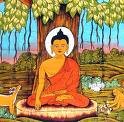
The Originar of Hatha-Yoga
Tree is the highest evolved form in plant kingdom. Man is the highest evolved species in Animal kingdom. Mushrooms are the best fungi visible on this planet. There is commonality of forms among all these highest evolved forms among different type of life-forms -Tree-like structure.Man is a cerebro-spinal being sheathed within a fleshy body. Most evolved form of cell is neuron that mediates consciousness is Tree-like structure. Surprisingly, most powerful thing that mankind achieved viz. atom bomb , produce Tree-like clouds after exploding on the surface.
Tree-like structure in Nature!
One can find out where else do Tree-like structure in nature exist. Pliny, the Younger linked the eruption of Vesuvius eruption in 79 A.D. with Italian umbrella pine. It is now an established scientific fact that the most powerfur process within earth, volcanic plumes that move inside earth is umbrella-shaped with a column & umbrella spinning about vertical axis( Tree-like). The most terrible force on the surface of the earth are the Tornados which are again Tree-like shapes with a column & an umbrella. Tree-like shape is found in other very powerful phenomena like lightening flashes, electric sparks, river delta, snowflakes, coral .
Tree-like structure is characteristics of every visceral system. Biologists trace this form in the mosses, lichens, shrubs, root system, mammalian lung bronchioles, cells of nervous system, veins & arteries forming cardio-vascular system. Wheresoever there are branching system, that invariably culminate in a Tree-like structure.
Tree & Fractal Geometry
In last fortnight, a brilliant paper was published in ‚Advances in Soft Computing“, under the title“Algorithms for Tree-like Structure Generation“ by Anna Romanowska, a neuro-anatomist et al. The team characterised Tree-like structure as that form which bifurcates but do not form any cycles. The team picked up the concepts of fractal geometry & fused with algorithms to create a Recurrent Algorithm. Self-similarity and repetition of sequence( iteration) is generated by a bifurcating cascade. The team concluded that if living system are generated recurrently, complex organic structures like roots, bronchial system in lungs emerge.
Now that an algorithm for Tree-like structure has been generated, it will be feasible in a decade to manufacture on mass scale silicon bronchial/ cardio-vascular/ neural system .
Before the advent of Fractal geometry by Benoit Mandelbrot during 1970s, the question of Tree-like structure had perturbed many a great minds. Hisao Honda of University of Kyoto published a paper on “ Description of the Form of Trees by the parameters of the Tree-like body“ in the Journal of Theoretical Biology, May, 1971. Honda concluded that Tree architecture maximizes flow access. He found stastitical similarity in living & non-living world, among branching in living system & geological & geophysical system.
- Meet Swami SIVANANDA friends, yoga, studies, at facebook <
- Meet Bhagavad Gita friends, yoga, studies at facebook <
- Meet Patanajali friends, yoga, studies at facebook <
- Meet Buddhism, friends, studies, Medicine at facebook <
- Meet Paramahansa Yogananda friends, groups, studies at fb <
- Meet Raja Yoga, Friends, Group, studies at facebook <
- Meet IYENGAR (B.K.S.), Yoga, Friends, Studies, Groups at fb<
- Meet Swami Vivekananda, Yoga, Studies, Friends, Groups at fb<
- Meet Bhagavad Gita, Yoga, Studies, Friends, Groups at fb <
- Meet Ramana Maharshi Groups, Friends, Studies, Fans at fb<
- Meet Hinduism, Groups, Friends at facebook <
- Meet Kashmir Hinduism, Studies, Friends at facebook <
- Meet Shaktism and Devi the Godess at facebook <
- Meet Saundaryalahari: Wave of Bliss by Shankaracharya at fb <
- Meet Arsha Vidya Gurukulam, Studies, Friends, Fans, at fb <
- Meet Advaita Vedanta,Groups,Studies, Vivekananda at fb <
- Meet Yogi Yogendra Nath, Studies about Goraksha at fb <
- Meet Jaya Kula and the three ways of Practicing tantra at fb <
- Meet VASTU, Friends, and Study Groups at facebook <
- Meet Jyotish, Friends, and Study Groups at facebook <
- Meet Sacred Geometry at facebook <
- READ MORE HERE:
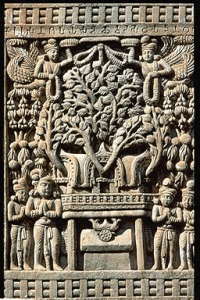
Morphic field & Morphic Resonance!
Tree-form is found in lower kingdom of Animal as well as Fungi. Jelly fishes or the polyp, these are invariably shaped like Trees. The colonies of proliferating marine organism replicate this form. It is interesting that jellyfishes which have no neurons & man with maximum neurons are essentially same in shape. Great Scottish biologist, Sir D’Arcy Thompson wrote in 1917 „On Growth and Form“, to analyse patterns & shapes in nature. His erudite tradition sd being carried by Rupert Sheldrake, a British biologist. He has done extensive work on the concept of morphic field & morphic resonance. By morphic resonance, he explains the influence of Like upon Like by which a connection among similar fields is established. He has shown in his work example of crystallization. It is very difficult to crystallize a new compound for the first time. Once it is done, a morphic field emerge. It is easier next time if someone does elsewhere in the world. There is a cumulative influence & it gets easier & easier to crystallize the compound. There is an accelerated rate of crystallization . Similarly, in learning among rats, this phenomena has been experimentally confirmed. It is difficult for a rat to pass through a maze for the first time. But, once a rat does this, another rat elsewhere does it much easily. And with each learning , there is spontaneous spread of new habits. For Sheldrake, evolutionary spread of new habit is not genetic but depends on a kind of collective memory due to morphic resonance.
This can be easily comprehended in case of human. It was very tough to manufacture clock or VCD or computer. More people are manufacturing, easier it is getting to manufacture. Watches, transistora & VCDs are now cottage industry. Who knows in future, robotics will emerge as similar kind of easily handled industry and there will be garages in every nook & corner of city to repair robots or even remodell robots by neighbourhood mechanic.
Sheldrake further proposes the concept of the „Memory of Nature“. Habits of nature depend on non-local similarity reinforcement. Through morphic resonance, the pattern of activity in self-organizing system are influenced by similar patterns in the past. He brings back the idea of Carl Jung‘ collective unconscious.
Examining Growth of Tree-Form!
I find the concept of morphic resonance appealing. That can explain this frequent recurrnce of similar pattern in nature. If we ponder over the shape of DNA & its future. The fluid around earth’s inner core creates a helical movement and generates magnetic field. The geodynamo of the earth is a self-replicating system that help explain the continuity of magnetism in earth’s core , otherwise it would have dissipated within 20,000 years. Now, the transformatory biological molecule,DNA, is helical as well as self-replicating. Within geo-physical processes, we know that Tree-like plumes are created. Now, this geophysical structure resonates throughout future evolution of biological world. For every plume within, there is a tornado on the surface. This first form of powerful process recurs at the level of the most developed categories at various levels, may it be fungi, or plants or animals or cells. And, that form recurs in even man-made powerful processes like atomic explosions.Upon visualizing this sequence, I can very well predict that the most successful biological robots or most efficient spaceship for planetary travels would have Tree-like architecture. Our Discovery spaceship is a poor materialization of that critical architecture.
Tree & bifurcation!
This Tree-like structure itself is generated by recurrent self-similarity which results due to behaviour of a dynamic system. Now, the chaos theorists have worked out very well that how in a dynamic system , a stage of crisis is set in and at the point , there are two possibilities for the system to transform. Sometimes, the system oscillates between two possibilities as found in certain chemical clocks extensively investigated by Nobal laureate Ilya Prigogine.Most of the times, the branches grow further and then bifurcate. This is iteration of self-similarity that later results into Tree-like structures.
If this kind of bifurcaing iteration is fundamental to our changing Reality which is dynamic, and there is morphic resonance, one can draw the contours of this phenomena of emergence of Tree-like structure at a higher level.
End of biological evolution!
The bifurcation, that determines DNA-replication to cell-division, has finally achieved its destiny in the biological world in the form of Human beings. We are the highest biological form and the biological evolution has now concluded. There is no further scope of biological evolution beyond us.Perfect biological bifurcating branching system has been achieved. Our lungs, our cardio-vascular system, neural system .. everything has emerged as mere consequence of cascading bifurcation. Surprisingly, we have greater number of most evolved cells viz. neurons (200 billions) which themselves replicate own form at macrolevel. The cerebro-spinal system is a magnified neuron. We are the only animal to walk on 2 legs. Penguins do perform but lack other binarities. We have two legs, two hands, two nostrils, two ears, two testicles, two mammary glands, two eyes, two kidneys, two hemispheres in brain, two atrium, two ventricles in heart, two excretory points, two lips, two jaws. Our thinking pattern is also binary. Our categories are in twos- good/bad, high/low,sacred/profasne, self/other… We donot yet understand that this duality in thought is rooted in hemispheric brain or in fractal geometry. There is no more bifurcation & branching possible in bodily architecture of human beings. This is the end-point of biological evolution. Now, mankind is on verge of developing biological robots & higher order machine consciousness therby imbuing consciousness to physical world bypassing the biological evolution. We are becoming the co-creator of the Universe as well as agent to accelerate self-consciousness of physical matter in the universe.
Trees are our cousin!
Now, the issue of Tree-like structure resonates into our collective psyche. Tree is the source of wisdom, healing, nourishment, power. Bible myth has Tree . Newton discovered moodern science sitting under an apple Tree. Buddha discovered non-theistic self-awareness sitting under a peepul Tree. In Tibetan tradition, powerful meditation requires visualizing Tree of lineage with various Gurus on different branches. These kind of visualization has transformative effect on our consciousness. In every culture, Tree occupies a significant position in rituals & mythology. We feel special feeling with Tree. Our romantic mood, our wisdom, contemplative mood, aesthetic mood.. orbit around physical & metaphoric Tree. Tree have power to transmit some kind of healing power to us. Tree are the source of healing body through fruits & herbal medicine . Tree heals our body, mind as well as soul, if any. The processes involved may be a kind of morphic reonance that vitalizes self-similar cardio-vascular, respiratory & neural system.Trees are our morphic cousins. We feel guilty & hurt when trees are cut or when those are under environmental threat.
Future?
One thing is certain. Future robots & spaceships which would be most efficient to survive would have Tree-like architecture. We would have very little to do with blooming of age of nanotechnology, biotechnology & Artificial intelligence. Successful creation of algorithm for Tree-like structure has made it more likely that artificial human organs can be manufactured at industrial level. When death will be conquered after successful download of Memories & large scale diffusion of bionics, We would have enough time to resonate with biological Trees in solitude & steer mankind towards a spiritual evolution as biological evolution from DNA-pathway has reached a dead end!
(Niraj,1.11.2009)
Mahayogi, Yogacharya, Guru Gorakhnath
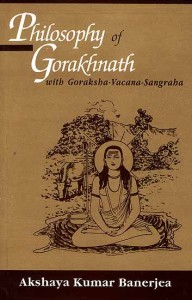
MAHAYOGI YOGACHARYA GURU GORKHNAHT JI AADESH AADESH .
BY MR . VISHAWAJEET SING JI
> HATHA YOGA AND THE MEANING OF TANTRA <
AADESH AADESH ,
MAHAYOGI ,YOGACHARYA ,GURU GORKH NATH JI
However, great Yogis such as Gorakshanath are following the system of Sadanga Yoga which has been stated by him in his book Goraksha Paddhati 1.7. This System avoids Yamaand Niyama. The justification given by those Yogis is that if you obtain mastery in meditation, your whole lifestyle gets changed in such a way, that you automatically start following the Yama and Niyamawhich are the necessary rules and individual rules of conduct respectively. These six aspects of Yoga are:
- Physical Postures
- Pranayama
- Pratyahara
- Dharana
- Dhyana
- Samadhi
2. According to the Nath Cult it is most important that the aspirant should purify his body completely. This has been stated in detail in Gheranda Samhita l.10-11-12. This is a total purification of all important and vital organs of the body such as stomach, small intestines, large intestines, nasal passage, food pipe, eyes, cars, throat, etc. After this the cult says that the aspirant is in a position to undertake all the steps of Yoga. In Patanjali’s Yoga Sutras this preparation of initial background is not mentioned.
3. The next step (in other Yoga systems) is the learning of physical postures. However, after learning all the important postures, the aspirant has to practise the most essential posture viz. Siddhasana or Vajrasana. For all the future Sadhanas this is considered to be the basic and important posture. The detailed description of this posture is given by Jnaneshvara in his sixth chapter of Jnaneshvari and also by a number of books of Nath Cult. They say that this posture is a must for all the aspirants. However, Patanjali says that you can sit in any convenient posture you like. Hence he gives the Sutra „Sthira-sukham asanam.“
4. The importance of a Guru or Master is maximum in Nath cult. Their every book or Shastra starts by remembering or bowing with great reverence and respect to the Guru Adinath or Shiva or Shankara. Jnaneshvari also starts like this by saying „Om Namoji Adya.“ This importance is not given to Guru in Patanjala Yoga Darshana.
5. The Nath cult says that the human body consists of certain most essential centres or vital points and voids (Akasha). (8) Every aspirant has to know and understand these things. They say that one who is not aware of these essential centres is not a Yogi. They are six Chakras, sixteen vital points, two Laksyas (concentration points), five voids, all situated within the human body. Such type of discussion is not found in Patanjala Yoga Darshana.
6. Nath cult says that the human body is just like a beautiful house which is having nine doors. It is formed out of five essential elements and each element is having its own deity. The nine openings are two eyes, two nostrils, two ear holes, mouth, excreta outlet, and sex organ. The deity of Earth is Brahma, of water is Vishnu, of fire is Rudra, of air is Ishvaraand of space is Sadashiva. Every aspirant has to understand these things. In Patanjala Sutras we do not find this.
7. The Nath Panth, in their various books as mentioned above, gives a detailed description of the seven chakras, their exact location in the body, their properties and functions etc. Jnaneshvara has not given the description of these chakras for the reason that he wanted to restrict his interpretation to the verses of Bhagavad-Gita. At the base of the spinal cord and at the centre of the line which connects sex organ and the excreta outlet is situated the first chakra which is known as Muladhara Chakra. Slightly above the sex centre and below the naval centre the second chakra is situated which is known as Svadhisthana Chakra. The third is situated near the naval centre and is called Manipura. The fourth one is situated near the heart centre and is known as Anahata Chakra. The fifth is situated at the throat centre and is known as Visuddha Chakra. It must be noted that all these chakras are situated in the Shushumna Nadi which passes through the spinal cord, which again passes through Vertebral Column. These are extremely subtle points and may not be structural and cannot be located by any sophisticated instrument available. These were actually ‚observed‘ and seen by the great Rishis in the stage of Samadhi. Here come the limitations of modern science. The sixth chakra is situated on the forehead and between the centre of the two eyebrows. This is known as Ajna Chakra. The seventh and the last chakra is situated in the centre of the brain in its uppermost portion. Patanjali does not mention any such thing in his Yoga Sutras.
8. According to Nath Cult there are 72.000 nerves in the body of human beings. Out of these ten Nadis are important. Out of these three are most important. They are known as Ida, Pingula and Shushumna. Ida is known as Chandra Nadi and is passing through the left side of the vertebral column. Pingula is known as Surya Nadi and is passing through the right side of the vertebral column. Shushumna Nadi is passing through the spinal cord and is known as Agni Nadi. Patanjali’s Yoga Sutras do not mention all this. He does mention a few Nadis like Kurma Nadi. But the detailed description is absent.
9. The concept of Prana has been studied in maximum details in Nath Cult. They say that in the human body there are ten different types of air or Vayus , which are known as Prana, Apana, Samana, Udana, Vyana, Naga, Kurma, Krikala, Devadatta and Dhananjaya. Each one is situated in a specific part of the body. Each one is having specific purpose and function in the body. When we take the air inside our body, it gets bifurcated into ten branches. This is just like a stream of water which starts from the Himalayan Mountains and gets bifurcated into several branches and each branch becomes a river and is given a separate name. Present medical science is not in a position to locate these ten different types of airs. However, our ancient Yogis have actually ’seen‘ these different streams of air inside our body. This type of description is not found in Patanjala Sutras.
10. When we breathe in there is a subtle sound which is known as ‚So‘ and when we breathe out there is a subtle sound which is known as ‚Ham‘. Everyone can experience this with slight practice. This sound of ‚Soham‘ is continuously going on with every breathing. In a period of one day, that is twenty-four hours, we take 21.600 breathings. That means this type of sound which is known as Mantra, is being continued in our body for that many number of times (21.600). If the aspirant observes this mentally and consciously, this becomes a great Sadhana. This Sadhana is being given very great importance in the Nath Cult. This is not found in Patanjala Yoga Sutras (PYS).
11. The most important aspect of the Yoga Sadhana of Jnaneshvara is the activation of the Kundalini Shakti. This is a Tantric Sadhana of the Nath Cult. Jnaneshvara has given a detailed account of this process in his sixth chapter. This is a practical application of the philosophy of Nath Panth. They say that the whole universe is created out of the energy of Shiva or Mahashiva or Adinatha. They call it Shakti or cosmic energy. This energy is occupying the whole universe. The smallest portion of this energy is known as Kundalini, and the energy which is present in the entire universe is known as Maha Kundalini. This energy is present in human beings in potential form (Supta Shakti). The Yogis who have experienced this energy, say that this is like a serpent and is situated at the end of the Shushumna Nadi in a coiled form, in three and a half coils, position. This also is in line with their philosophy which says „Bramhandi te Pindi“. This means that whatever exists in the universe also exists in the human being in the subtle form. Nath Cult and their great masters like Gorakshanath have devised various ways and means to activate this energy. Saint Jnaneshvara has described one method of activating this energy. This method has been stated in almost all the books of Hatha Yoga and Natha Panth and some Upanishads. The detailed description is available in the sixth chapter of Jnaneshvari.
This energy can also be activated by Mantra Yoga, Laya Yoga and Bhakti Yoga. That is why we find in Jnaneshvari all these systems of Upasana.
The ultimate stage of realisation or Moksha as per this colt is the union of Shakti with Shiva. Hence the aspirant initiated in this cult has to activate this energy and allow this energy to go through all the six chakras gradually. The place of Shiva is considered to be in the last chakra which is known as Sahasrara. In the ultimate stage, Sadhaka has to transfer this energy to this last chakra. This is supposed to be the point of union of Shakti with Shiva. One who is successful in this process, is supposed to be a great Yogi. A number of spiritual powers known as siddhis are at his disposal in that stage. A number of examples are available in the ancient Shastras about the Yogis, who were successful in obtaining this highest stage. Jnaneshvara had experienced the above union with Shiva and hence he is known as Maha Yogi. In PYS we do not find anything about Kundalini Shakti.
12. In Nath cult there is a great importance of a Gun or Master. He is given the same importance as is given to their ultimate Guru Adinath. That is why Jnaneshvara is giving maximum importance to his Guru Nivrittinath and is mentioning his name in Jnaneshvari at a number of places. Not only that, he gives the entire credit of writing this book to Nivrittinath. Their philosophy says that the aspirant can get the ultimate experience of truth or Shiva only with the continuous guidance of Guru or the Master. We find that every book of Nath Panth starts after bowing to Guru.
13. In this cult we find a mystic and esoteric act of the transfer of spiritual energy from the master to the initiated aspirant and the act is known as Shaktipata. With the tremendous powers of the master, he can activate the Kundalini energy of the disciple. This transfer, he can do by touching a specific part of his body or simply by looking at him. This transfer of energy can be done on the aspirant who is at a great distance from the master. This is a peculiar mystical act. After the transfer of energy, the aspirant experiences a number of supernatural things, a tremendous flow (of liquid) light, etc. However, those scholars who are really anxious, should go through the book Awakening of Kundalini written by Pandit Gopi Krishna, who had undergone all these experiences before about twenty-five years in Kashmir. The concept of Shaktipata is not found in PYS.
14. This cult gives a great importance to the practice of certain physical postures known as Mudras. They are useful in meditation and also in the activation of Kundalini energy and the six chakras. Hence every aspirant has to learn these Mudras. The ancient texts say that such Mudras arc twenty-five. Out of these ten are most important. With the practice of Mudras the aspirant is in a position to get rid of any and every disease and can acquire a number of supernatural powers. Because of these multiple advantages, the aspirant is taught these postures and afterhe achieves this experience, he is taught Pranayama. Mudras arc nowhere mentioned in PYS.
15. There is a difference between the Dhyana-meditation of Patanjali and Jnaneshvara. Patanjali gives the definition of Dhyana as per Sutra No. III.1 and III 2 which are as under. The aspirant has to concentrate on specific or vital part of the body or on some external point. This process is known as Dharana. When the aspirant gets success in the concentration on that particular point, for a sufficiently long time, it becomes a Dhyana. For the concentration on that particular point, the aspirant has to use his mind. However, in Kundalini Yoga, the aspirant has not to use his mind at all. He has to practise Kumbhaka, wherein the function of mind totally stops. Instead of concentrating on any particular point, the aspirant has to activate the Kundalini energy. This is a much superior way. This opinion has been confirmed by Sir John Woodroffe, in his book The Serpent Power on page No. 314 and 315 of the eleventh edition, which the learned scholars and philosophers can refer to any time.
16. Patanjali gives a broad division of Samadhi, which is termed as SamprajnataSamadhi and Asamprajnata Samadhi. However, the stage of Samadhi has been studied in details by the Nath cult and which is followedby Jnaneshvara in toto. Nath cult has categorised Samadhi in six types which are known as I ) Dhyana Yoga Samadhi, 2) Nada Yoga Samadhi, 3) Rasananda Yoga Samadhi, 4) Laya yoga Samadhi, 5) Bhakti Yoga Samadhi, and 6) Raja Yoga Samadhi. How each Samadhi can be experienced is also discussed in details. Scholars and philosophers can refer chapter seven of Gheranda Samhita which gives the entire description.
To conclude, I would like to state that both these systems of Yoga are different. The reason is obvious. Their philosophical base is altogether different. That is why the Yoga of Nath Panth accommodates Hatha Yoga, Kundalini Yoga, Mantra Yoga, and Bhakti Yoga. This Yoga Philosophy is therefore multi-dimensional. Besides the results here are very fast. This has been promised by Gorakshanath in his book. However, it is advisable that the practices of this Yoga should be undertaken under an able and experienced master.
To end the paper, I would like to quote the verse No. IV.114 from Hatha Yoga Pradipika. It says that till you are not in a position to activate the Kundalini energy, till you are not in a position to have perfect control over your pranic force, till you are not in a position to clear the path of Shushumna Nadi, all your knowledge is external, futile and full of ego. It is only an exercise of talking and nothing else. Hence he says that this is a process which has to be experienced only.
References
- Jnanesvari by Sakhare Maharaj.
- Goraksa-paddhati by Gorakshanath.
- Gheranda Samhita – Commentary by Shree Swamiji Maharaj.
- Hatha-yoga-Pradipika by Shree Swatmarama Yogi
- Patanjala Yoga (Sutra) Pradipa by Swami Omananda Tirtha.
- Patanjala Yoga Darsana by K.K. Kolhatkar
- Yoga Yajnavalkya
- Siddha-Siddhanta-Paddhati by Gorakshanath
- Shiva-Samhita – Commentary by Dr. K.R. Joshi
Dein Ayurveda Net, > svadhyaya < , Articles:
SONGS ON YOGA of the MahÄ�rÄ�ṣṭrian NÄ�th Yogis
> Shri Jnandev’s Anubhavamrut: The Immortal Experience of Being <
( One of the Mystic Poet´s of Mahasastra )
> GORAKSHANATH – Origin of Hatha Yoga <
> THE MEDEVIAL SAINTS OF INDIA <
www.proyoga.de – Meine wissenschaftliche Arbeit
Zur Zeit des indischen Mittelalters wanderten in weiten Teilen Indiens und Tibets tantrische Mystiker umher, die Nathas, Nathayogis oder Nathasiddhas genannt wurden. Sie praktizierten und lehrten Hatha- und Kundaliniyoga und hatten großen Einfluss auf das religiöse Leben der Menschen.
In meiner Doktorarbeit habe ich die Lehren und Praktiken dieser Yogis untersucht. Als Textgrundlage dient hierbei ein Werk aus dem ca. 13. Jahrhundert, das Vivekadarpana, wörtlich ‚Spiegel der unterscheidenden Betrachtung‘. In diesem recht umfangreichen Werk (21 Kapitel) wurden die Lehren aus unterschiedlichen philosophischen Schulen, Konzepte und Praktiken diverser tantrischer und yogischer Traditionen, sowie viele mythologische Vorstellungen zusammengetragen.
Die in diesem Werk behandelten Themen sind u.a. ‚das Absolute Bewusstsein‘, ‚die Einzelseele‘, ‚der feinstoffliche Körper‘, ‚die Mikro-Makrokosmos-Korrelation‘, ‚die Guru-Schüler-Beziehung‘, ‚der Siddha‘, ‚der Hatha-Yoga‘, etc. Da sich das Vivekadarpana an den Sadhaka, also den praktizierenden Yogi, richtet, ist es jedoch nicht nur ein philosophisches Werk, denn nach Auffassung der Nathayogis vermittelt Information allein noch keine Erkenntnis oder Einsicht, ganz zu schweigen von einer Transformation des Menschen zum höchsten, allumfassenden Bewußtsein, dem angestrebten Ziel der Nathayogis. Daher ist das Vivekadarpana auch ein praktisches Yogalehrbuch, in dem Ratschläge und Anweisungen zur Yogasadhana (spirituelle Praxis) ihren Platz haben.
Meine Doktorarbeit ist bei der Universitätsbibliothek Heidelberg elektronisch veröffentlicht. Mit der Adresse www.ub.uni-heidelberg.de/archiv/2113 gelangen Sie auf die Hauptseite meiner Veröffentlichung. Hier werden Sie u.a. den Titel und eine kleine Zusammenfassung meiner Arbeit in Englisch und Deutsch vorfinden. Die Doktorarbeit selbst befindet sich in den aufgeführten 32 pdf-Dateien, die Sie downloaden können.
Kashmir Shaivism and the Natha Tradition is related.
by > Matsyendra Nath < :
A number of Indian scientists and Nathas believe that in a system Krama the guru Maheshvarananda, known for his text „Mahartha-manjari“, is Gorakshanath, who is a founder of the Natha Tradition. Besides, everyone knows that Abhinava Gupta mentions Matsyendranath (who is the guru of Gorakshanath) ein Sri Tantraloka as his guru. He also mentions Shambhunath in Tantra-sara as his guru. Shambhunath is not only the main guru of Abhinava Gupta, but he is also known as a guru in the Natha Sampradaya. Kashmir Shaivism synthesized in itself a lot of tantric and shakta methods that had found their place in the Natha Tradition. Guru Gorakshanath also put an emphasis on the inner essence of these teachings, seeing in them a unity of their mystical experience.
Abhinava Gupta as like Gorakshanath, taught one method or the exact methods without method „anupaya”. All other „upayas“ is agents for different types of practitioners. Nathas have the same, all the texts say that there is no Raja Yoga without Hatha and vice versa, there is no difference between Shiva and Shakti.
According to the terms the Nathas much borrowed from Siddhanta of Kashmir Shaivism. Probably, many followers Kashmir Shaivism migrated from Kashmir, dissolved in shakta, natha and buddhist schools. As in the Kashmir Shaivism, in the tradition of Gorakshanath each following tattva contains that from which it emerged itself. Five Shakti, described in one of the major works of Natha Sampradaya (Siddha-Siddhanta Paddhati), identical to those of Shakti, which are described in the tradition of Kashmir Shaivism: Nija-sakti is Chitti-shakti, Para-shakti is Ananda-shakti, Apara-shakti is Ichchha-shakti or Sadashiva tattva, Sukshma-shakti is Jnana-shakti or Ishvara tattva, Kundalini-shakti is Kriya-shakti or Shuddha-Vidya tattva. Three „upayas“ can be correlated as follows: anava with the mantra-yoga and hatha-yoga, shakti with laya-yoga, and shambhava with raja-yoga. The difference is that instead of detailed analysis Suddha and Suddha-ashuddha tattvas the Nathas pay more attention to the theory of the body of Vishesha-purusha and Vyashti-Pinda, but on the other hand, the theory of 6 tattvas is acceptable to nathism.
The > Pratyabhijnya < very close to a doctrine of Nathas, many gurus say that nathism once dissolved and kept in itself a lot of Kashmir Shaivism, such as the principle of Nirupaya by grace (anugraha) of Guru or by shaktipat, etc.
SONGS ON YOGA: texts and teachings of the MahÄ�rÄ�ṣṭrian NÄ�th Yogis: Welcome to the Department of Indian and Tibetan Studies at the Asien-Afrika-Institut
The Asien-Afrika-Institut, situated in the heart of the city, provides students and researchers with ideal circumstances in which to study a multitude of languages and cultures. Read More: > HERE < ,
NADA YOGA is the core of Dhrupad Music

> MAJOR SCHOOL´s OF DRHRUPAD <
http://dagarvani.org ( info & free videos)
Dhrupad is the oldest surviving form of Indian Classical music and traces its origin to the chanting of VEDIC HYMNS and MANTRAS. Though a highly developed classical art with a complex and elaborate grammar and aesthetics, it is also primarily a form of worship, in which offerings are made to the divine through sound or n�da. Dhrupad can be seen at different levels as a MEDITATION, a mantric RECITATION, a worship , a YOGA or TANTRA based on the knowledge of the NADIS and CHAKRAS and also purely as a performing art portraying a universe of human emotions. It is mainly a vocal tradition based on the practice of NADA YOGA, but is also performed on instruments like the Rudra Veena and the Sursring�r. For the past five centuries Dhrupad has mainly thrived under the patronage of Mughal and Rajput kings. Read More: > HERE <
Nada Yoga is the core of Dhrupad Music
By Dr.Acharya Trigunateet Jaimini
Indian traditional systems of health and healing also include various musical treatment approaches. A few healing traditions are also integrated in modern music therapy practice in India.
Vedic traditions dating back roughly 5000 years ago had a great intuition about the power of sound and intonation. The Vedic chants and music which had more sound and rhythm, used as a source of healing and up liftment reflected the intuition that each intonation and inflection of voice could have beneficial or adverse effects.
Music Raga Therapy , an extinct sanskrit treatise, as its name implies dealt with curative ragas and suggested specific ragas with specific therapeutic and a prophylactic medium in clinical and educational settings. the Vedic system of health care concerned with healthy living and not disease specific takes into account the patient’s entire personality, body, mind and the spirit and guides the participants for a healthy living along with the therapeutic measures that relate to physical, mental, social and spiritual harmony.
Nada Yoga is the core of Dhrupad, the most ancient style of Hindustani Classical Music. Originally only sung by priests in the temples as an act of worship, it induces a deep meditative state in the singer as well as the listener.
Vrindaban, the abode of Lord Krishna, situated on the bank of the Holy river yamuna is known for its devotional classical music „Dhrupad“. Bhagwat Puran states that Lalita Sakhi sang in Dhrupad style during the famous „Raas“-dance. Since then this tradition of ancient form of worship of Lord Krishna has been maintained in the temples of Vrindaban. Dhrupad is a particular north Indian style of classical music related to „Vraja“. This was enriched and elevated to godly heights by the celebrated swamy Haridas of Vrindaban, the Guru of world famous musician Tansen.
Dhrupad is the most ancient form of Hindustani classical music. There are two interpretations for the word Dhrupad. One is that it is derived from dhruva, the steadfast evening star, and pada, meaning ‘poem’. The other is that the word druva means ‘fixed’ and pada ‘poem’ which makes it into a poem set to music. Its origins have been traced back to the recitation of the sama veda, one of the four sacred vedic scriptures. The form developed through the sama gaan, the chanted transmission of holy texts.
Dhrupad is the oldest existing form of Indian classical music. The nature of Dhrupad is spiritual- its purpose is aradhana (worship). Seeking not to entertain, but to induce deep feelings of peace and contemplation in the listener.
Its origin is linked to the recitation of Sama veda, the sacred Sanskrit text. Dhrupad probably evolved from the earlier chanting of Om, the sacred syllable which is claimed to be the source of all creation. Later, the rhythmic chanting of the Vedic scriptures evolved into singing of Chhanda and Prabandha.
According to some accounts, Dhrupad was sung in temples, the singer facing the divinity. From this early chanting, Dhrupad evolved into a sophisticated, classical form of music. The language of Dhrupad changed from Sanskrit to Brijbhasha sometime between the 12th and the 16th century.
* Nada Yoga Discourse by Dr. Padma Murthy *
Dhrubad, Dhruvatara – the evening star, the star that never trembles, and Pada – poetry, merge to give name to this music, Dhrupad. Dhrupad, the name does what it should, it makes luminous the nature of that which is named.
Sometime during the first millenium A.D. the chanting evolved into the singing of chhanda and prabandha. The modern Dhrupad is said to have emerged out of the prabandha style of the 12th to 14th centuries. By the 11th century it had developed its perfect form. Dhrupad was and still is an act of worship during which the priest or musician surrenders to the Divine and invokes the rasa (mood) of the raga (musical mode). The intention is to put the listener into a state of inner peace and contemplation.
Between the 12th and 16th centuries the language of the compositions changed from Sanskrit to Brijbhasha (the language spoken in the area of Vrindavan) and about six centuries ago the music came under the patronage of the royal Moghul courts, where it was adapted for performance, thus evolving into a refined and sophisticated art form. The compositions became more secular though and were often praises of the emperors, whereas before they had been devotional and philosophical in nature.
One of the patrons of Dhrupad was the Moghul ruler Man Singh Tomar of Gwalior who also practiced the art. It reached its peak during the time of the legendary court musician of Akbar, Tansen, and Swami Haridas, who is often thought to have been the teacher of Tansen.
Nada Yoga is the core of Dhrupad Music
By –
Dr.Acharya Trigunateet Jaimini
Head of Department Music Sitar
Mangalayatan University ,
Aligarh, Uttar Pradesh.
INDIA
Painting by
Renowned Fine Artist
Prof. Chitralekha Singh
D.Litt,
DEAN
Institute of Visual & Performing Arts
Mangalayatan University ,
Aligarh, Uttar Pradesh.
INDIA
References & External Links: > DHRUPAD <
- http://dhrupadsangeetashram.com
- http://www.dhrupad.info/
- Ravi Shankar, Raga Mala, Welcome Rain Pub., 1999, p.319
- http://www.dhrupadsangeetashram.com
- http://www.dagar.org
- http://www.dagarvani.org
- http://www.dhrupadsangeetashram.com
- http://www.hindu.com/thehindu/fr/2006/02/24/stories/2006022403320600.htm
- http://www.dagarvani.org/dagar-family-tree.html
-
www.ritwiksanyal.com –Dhrupad Ritwik Sanyal
-
www.dhrupad.org –The dhrupad school of the Gundecha Brothers
-
www.dhrupad.info –Dagarvani singer Ashish Sankrityayan’s web site
-
www.dagarvani.org –The off. web site of Ustad F. Wasifuddin Dagar
- http://udaybhawalkar.org/ – Dhrupad Uday Bhawalkar
- www.dhrupad.org – The dhrupad school of the Gundecha Brothers
- www.dhrupad.info –Dagarvanisinger Ashish Sankrityayan’s web site
- www.dagarvani.org – The off. web site of Ustad F. Wasifuddin Dagar
- GHARANA, BENARES MUSIC ACADEMY, Children Project <
- ALI AKHBAR COLLEGE OF MUSIC <
- Meet Dhrupam studies, groups, friends at fb <
- Meet free VISA to India for MBA, degree programs, jobs at fb <
- Meet Maestro Jaimini at facebook <
- MeetSWARA.at,Plattform f. ind. Musik/Tanz in Österr. at fb <
AYURVEDA FOOD DIET, DOSHA´s, YOGA
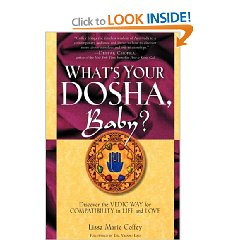
> AYURVEDA4YOU ALL, SAMA DOSHA <
> Natural Institute of Ayurveda <
> AYURVEDIC LIFESTYLE & DAILY ROUTINES <
Ayurveda (DevanÄ�garÄ�: आयुर्वेद, the ’science of life‘) is a system of traditional medicine native to the Indian Subcontinent and practiced in other parts of the world as a form of alternative medicine. In Sanskrit, the word Ayurveda consists of the words Ä�yus, meaning ‚life‘, and veda, meaning ‚related to knowledge‘ or ’science‘. Evolving throughout its history, Ayurveda remains an influential system of medicine in South Asia. The earliest literature of Ayurveda appeared during the Vedic period in India.The Sushruta Samhita and the Charaka Samhita were influential works on traditional medicine during this era. Ayurvedic practitioners also identified a number of medicinal preparations and surgical procedures for curing various ailments and diseases.Ayurveda is considered to be a form of complementary and alternative medicine (CAM) within the western world, where several of its methods, such as the use of herbs, massage, and Yoga as exercise or alternative medicine, are applied on their own as a form of CAM treatment
Ayurveda is grounded in a metaphysics of the ‚five great Elements‘ (DevanÄ�garÄ�: [महा] पञ्चभूत; earth, water, fire, air and ether)—all of which compose the Universe, including the human body.Chyle (called Rasa dhatu), blood (called Rakta dhatu), flesh (called Mamsa dhatu), fat (called Medha dhatu), bone (called Asthi dhatu), marrow (called Majja dhatu), and semen or female reproductive tissue (called Shukra dhatu) are held to be the seven primary constituent elements (DevanÄ�garÄ�: सप्तधातु) of the body.Ayurveda stresses a balance of three Humors or Energies: vata (wind/air), pitta (bile) and kapha (phlegm). According to Ayurveda, these three regulatory principles— Doshas (DevanÄ�garÄ�: त्रिदोष)—are important for health, because when they are in balanced state, the body is healthy, and when imbalanced, the body has diseases. Ayurveda hold that humans possess a unique combination of Doshas. Read more: > HERE <
Yoga per se, does not say much about diet, except that we should be ‚Mitahari‘ (Mita-Ahar-ee), ‚Mita‘ meaning ‚proportionate‘ or ‚enough to nourish‘, and ‚Ahar‘ meaning ‚food‘. ‚Mitahar therefore, has come to mean ‚moderation in eating‘. But, we know, it is not enough to be moderate in intake of pebulum. It is not enough to mind the quantity of food; quality of food ingested is of even greater importance. In Yoga shastras, Mitahar has been described as diet that is
- Palatable,
- Nutritious,
- Providing various ‚Dhatu‘ (literally meaning ‚Minerals‘),
- Containing dairy produce such as milk, yogurt, butter or butter-milk,
- Eaten in moderation, and
- Eaten in a spirit of dedication to the Divine.
The last aspect is akin to the saying of grace at the dinner table by devout Christians.
Hindu shastras also speak about the three ‚Guna‚ of food, ‚Guns‚ meaning quality. ‚Sattwic‚ food is variously understood as ‚contributing to serenity‘, ‚providing the essentials‘, Keeping the human organism sweet and clean‘, etc. ‚Rajasic‚ food contributes to dynamism and other requisite qualities needed by a householder or housewife. ‚Tamasic‚ food is strong in taste or smell and can be ‚heaty‘ or ‚exciting passions‘.
Revelations of Science & Yoga, Diabetes
In the light of modern nutritional researches, we have to find out the ideal diet which is both ‚Mita and Sattwic, so that the Yoga practitioner benefits therefrom both physically and mentally. Let us find out whether Yoga should favour the intake of flesh, fish or fowl. What does human anatomy and physiology tell us? Read More: > HERE <
- YOGAH AND SHODANA: > HERE <
-
ABOUT DIET IN AYURVEDA :
YOGA SUTRAS OF PATANJALI
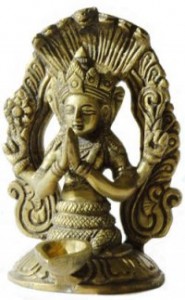
> The Yoga Sutras Of Patanjali <
> P A T A N J A L I, Full Aspects <
Patanjali was a great sage that lived thousands of years ago. The yoga Sutras he wrote seem to have transcended time remaining one of the most influential spiritual writings in Yoga.
The Yoga Sutras consist of 195 verses divided into 4 chapters. It is a book for those who have already practiced some meditation and attained some higher states of consciousness.
The Yoga Sutras of Patanjali is a foundational text of Yoga. It forms part of the corpus of Sutra literature dating to India’s Mauryan period. In Indian philosophy, Yoga (also Raja Yoga to distinguish it from later schools) is the name of one of the six orthodox philosophical schools.Though brief, the Yoga Sutras are an enormously influential work on yoga philosophy and practice, held by principal proponents of yoga such as > Iyengar < (1993: p.xiii) as being of principal importance:
Patañjali fills each sutra with his experiential intelligence, stretching it like a thread (sūtra), and weaving it into a garland of pearls of wisdom to flavour and savour by those who love and live in yoga….
Read More: > here <
Mantra of sage Patanjali:
- yogena chittasya padena vacham malam sarirasya cha vaidyakena | yopakaroti tam pravaram muninam patanjalim pranajaliranato’smi ||
- Let us bow the noblest of sages Patanjali, who gave Yoga for serenity of the mind, Sanskrit grammar for purity of speech and Ayurvedic medicine for the perfection of health.
JNANA YOGA
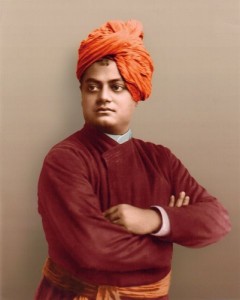
> COMPLETE WORK SRI RAMAKRISHNA, VIVEKANANDA <
> The Complete Works of Swami Vivekananda/Jnana-Yoga <
Swami Vivekananda (Bengali: স্বামী বিবেকানন্দ, Shami BibekÄ�nondo; Hindi: स्वामी विवेकानन्द, SvÄ�mi VivekÄ�nanda) (January 12, 1863–July 4, 1902), born Narendranath Dutta is the chief disciple of the 19th century mystic Sri Ramakrishna Paramahamsa and the founder of Ramakrishna Mission. He is considered a key figure in the introduction of Vedanta and Yoga in Europe and America and is also credited with raising interfaith awareness, bringing Hinduism to the status of a world religion during the end of the 19th century. Vivekananda is considered to be a major force in the revival of Hinduism in modern India. He is best known for his inspiring speech beginning with „sisters and brothers of America“, through which he introduced Hinduism at the Parliament of the World’s Religions at Chicago in 1893.
Swami Vivekananda was born in an aristocratic Kayastha family of Calcutta in 1863. His parents influenced the Swami’s thinking – the father by his rational mind and the mother by her religious temperament. From his childhood, he showed inclination towards spirituality and God realization. While searching for a man who could directly demonstrate the reality of God, he came to Ramakrishna and became his disciple. As a guru, Ramakrishna taught him Advaita Vedanta and that all religions are true, and service to man was the most effective worship of God. After the death of his Guru, Vivekananda became a wandering monk, touring the Indian subcontinent and getting a first-hand account of India’s condition. He later sailed to Chicago and represented India as a delegate in the 1893 Parliament of World Religions. An eloquent speaker, Vivekananda was invited to several forums in United States and spoke at universities and clubs. He conducted several public and private lectures, disseminating Vedanta, Yoga and Hinduism in America, England and a few other countries in Europe. He also established Vedanta societies in America and England. He later sailed back to India and in 1897 he founded the Ramakrishna Math and Ramakrishna Mission, a philanthropic and spiritual organization. Swami Vivekananda is regarded as one of India’s foremost nation-builders. His teachings influenced the thinking of other national leaders and philosophers, like Mahatma Gandhi, Jawaharlal Nehru, Subhas Chandra Bose, Aurobindo Ghosh, Sarvepalli Radhakrishnan, and Rabindranath Tagore.
THE PATH OF KNOWLEDGE –
Jnana Yoga according to Bhagavad Gita:
The aim of this article is to introduce the concepts of Jnana Yoga or the path of knowledge/wisdom in the light of the Bhagavad Gita…I will introduce only a few verses from the Gita to emphasize the approach to Jnana marga…at the same time, we will see practical methods for Jnana Yoga….The Gita is eminently a practice manual too.!
Introduction
The Hindu approach to spiritual evolution leading to liberation or moksha or Self-realization is one of the four major paths or yogas:
-
the path of knowledge or Jnana yoga,
-
the path of mind control or Raja Yoga ,
-
the path of devotion of Bhakti yoga and
-
the path of action/work or Karma yoga.
This is the common mode of classification, mostly derived from Swami Vivekanada’s lectures. Other yogas are minor variations of these four .
Of these, Bhakti Yoga and Karma Yoga have been given less importance in former times. The path of Knowledge, with focus on Hindu philosophy, has been in the forefront since the Vedic times…Some advaitins [non-dualists] would maintain that Karma yoga and Bhakti Yoga are preparatory steps or stepping stones [to purify the mind, chitta shuddi] and final liberation is possible only due to acquisition of Jnana or by Jnana Yoga as the final entry gate….[This was the stand taken by Shri Adi Sankara in Vivekachudamani too.]
The Jnana yoga is intellectually satisfying with abstract reasoning and can be devoid of rituals and formal worship of idols and symbols ;it is non-sectarian and asserts that the indwelling Soul or Atman and Self is the same in all.All these appeal to those who have a dislike for formal worship with rituals.[Yet devotion to Guru is essential in the Hindu context.]
Be that as it may, there are many saints and sages who would maintain that Bhakti yoga alone or Karma plus Bhakti is enough for final emancipation! I do not wish to dwell on this here because I have discussed this in greater detail in one of my books. [Refer: the Essence of the Bhagavad Gita…Pustak Mahal, New Delhi]
The significance of Jnana Marga
Among the four paths or yogas, Jnana marga is considered as the ‘direct’ path . If you consider the spiritual effort as that of climbing a mountain and reaching the summit, Jnana is like rock climbing without detours and winding roads.
Bhakti yoga can be likened to a sloping ,winding road leading to the summit and Raja yoga is like taking steep steps over rough stones. Thus Raja yoga is more difficult than Bhakti and Jnana is the most difficult of all.
Jnana yoga is admittedly difficult and certainly is meant for ‘dhiras’ –accomplished intellectuals with tremendous power of concentration for deep meditations on the abstract Self or Atman or Brahman. It is like rock climbing , with lot of training from expert mountain climbers and those with good physique…not for weaklings!…snd thode with ascetic bent of mind..
Therefore over the ages, there have been very few real jnanis .We are thrilled by the lives of great Jnanis or sages like Bhagawan Ramana or Sadashiva Brahmendra, Thayumanavar or Nisargadatta….again how many disciples they had who reached those heights?..may be a few again.
Bhagawan Ramana Maharshi stated that Jnana and the path of Self-enquiry or atma-vichara are really easy to encourage novices; , but among those who tread this path, many have fallen on the wayside many times. When you climb a rock face, a single mistake will result in crash to the bottom.!
I am not counting here excellent philosophers who may expound on the philosophy or nonduality [Advaita] and give lectures/satsanghs, but only those who have had deep experience of the Self; or reached Samadhi states.
It is safe to say that the path of Knowledge or Jnana is pretty difficult for this materialistic age, when ascetic methods are not even understood or appreciated, in the highly commercial atmosphere we live in.
What Jnana Yoga entails?
Swami Vivekananda had beautifully explained this path in his lectures, compiled into the book— ‘Jnana Yoga’ , published by Advaita Ashrama/RK mission/Vedanta societies.. I do not wish to elaborate on these, but point out a few things.
Jnana path entails two things: Viveka or discrimination and Vairagya or dispassion.
Viveka means distinguishing between unreal things [the phenomenal world, world of change ] and the Real, that is permanent [Self/Atman/Brahman].To get Viveka one may require intellectual analysis, cogitation, reflection and discussion….Satsangha would help ,but would not be always sufficient.
Vairagya or dispassion is to difficult to achieve…this is nonattachment to things of this world…little by little at first—the practice of sacrifice and renunciation….monkhood with severing of ties, with family ,society ,abandoning one’s property and possessions…Bhagwan Buddha [Sakyamuni], St Francis and Bhagwan Ramana are rare examples….Many jnanis may attain this stage in slow degrees too…
It is alright to talk of being in the world ,not of the world’ in a rhetorical sense, but not easy to practice…many so called Jnanis that I have come across still maintain contact with their kith and kin and friends , maintain personal bank accounts, own property—thereby making a mockery of real renunciation or sannyas in Indian /Hindu framework.
There are instances of great Jnanis making the break suddenly in a moment of intense vairagya or renunciation;they serve as beacon-lights for others and exemplify this path.
Let me add that in the Hindu context, only those who exhibit intense Vairagya would be respected in the Hindu society and acknowledged as real Jnanis, not those who profess enlightened state or give wonderful lectures or self-styled gurus.
A Jnani ,by definition ,has attained a state of equanimity or samatva;he looks upon pain and pleasure, friends and foes, glory and ignominy ,heat and cold, in the same light, without any feeling whatsoever. In other words, he does not exhibit attachment [ragha] or aversion [dvesha] against any one or any particular thing.
The message of the Bhagavad Gita.
Now let us turn to a few verses from the Gita.
The verses are most beautifully told in chapters 2,3,4,& 5.
-
That calm man who is the same in pain and pleasure ,whom these cannot disturb, alone is able to attain to immortality—O Arjuna. [2-15]
-
The Unreal never is. The real never is not.Men possessed of the knowledge of the Truth fully know both of these. [2-16]
-
This verse is the distilled essence of non-duality or advaita.
-
That by which all this is pervaded—that know for certain to be indestructible. None has the power to destroy this Immutable.[Self/Atman] [2-17]
-
Being steadfast in Yoga, perform actions , abandoning attachment, remaining unconcerned as regards success and failure. This even-minded is known as Yoga..[2-48]
-
Endued with this evenness of mind, one frees oneself in this life, alike from vice and virtue; devote thyself, to this yoga….Yoga is the very dexterity of work. (skill in action) [2-50]
-
Attachment [ragha] and aversion [dvesha] of the senses for their respective objects [of the senses] are natural; let none come under the sway; they are his foes. [3-34]
-
As fire is enveloped by smoke, as a mirror by dust, as an embryo by the womb, so is It covered by that [desires]. [3-38]
-
That man who lives devoid of longing, abandoning all desires, without the sense of “I” and “Mine” , he attains to peace. [2-71]
-
Mahatma Gandhi attached great importance to chapter 2 and chapter 3 of the Gita and also the latter portion of Ch 2 –verses 58-72 on the man of steady wisdom.
-
Whose actions are all devoid of plan [sankalpa] and desire for results, and whose actions are burnt by the fire of knowledge, him, the sages call wise. [4-19]
-
Verily there exists nothing in this world as purifying like knowledge. In good time, having reached perfection in yoga, one realizes that [knowledge]oneself in one’s own heart.. [4-38]
-
The place which is reached by the Jnanis is also reached by the karma yogis .He who understands knowledge and performance of actions as the same alone sees.(understands).
-
To those whose ignorance is destroyed by the knowledge of the Self—that knowledge of theirs, like the Sun, reveals the Supreme. [5-16]
-
Those who have their intellect absorbed in That, whose self is That, whose steadfastness is That, whose consummation is That, their impurities [sins] cleansed by knowledge, they go whence to non-return. [Moksha] [5-17]
-
With the heart unattached to external objects, he realizes the joy that is in the Self. With the heart devoted to the meditation of Brahman, he attains unending happiness.[5-21]
A careful study of these verses will clarify many things relating to Jnana Yoga.
> Meet Swami Vivekananda, Vedanta Groups & Fans at facebook <
> Meet Ramakrishna Groups at facebook <
PATANJALI – DIE WURZELN DES YOGA
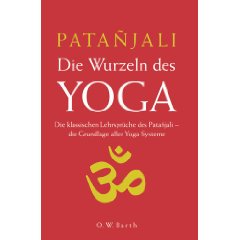
Die klassischen Lehrsprüche des Patanjali
von Bettina Bäumer
> YOGA & AYURVEDA von Vinod Verma <
Patanjalis Yoga-Sutras und ihre Anwendung auf Ayurveda
Patanjali (Sanskrit, पतञ्जलि, Patañjali, [pʌtʌɲʤʌlɪ]) war ein indischer Gelehrter, der die heute noch vollständig überlieferten Yoga-Sutras verfasst haben soll. In der indischen Mytholgie gilt er als Inkarnation des Schlangenkönigs Shesha. Über das Leben von Patañjali ist jedoch nichts bekannt, auch nicht wann er gelebt hat. Es ist nicht einmal sicher, ob er eine historische Persönlichkeit war. Indische Tradition setzt ihn mit dem Grammatiker gleichen Namens, der im 2. Jahrhundert vor Christus lebte, gleich. Da der Wortschatz des Grammatikers und des Schreibers jedoch stark von einander abweichen, gehen Indologen davon aus, dass es sich nicht um die gleiche Person handelt. Vielmehr sind sie aufgrund bestimmter Formulierungen, die sich auch im Spätbuddhismus finden, der Ansicht, das Werk sei im 4. oder 5. Jahrhundert nach Christus entstanden.
Wörtlich übersetzt bedeutet Sutra „Faden“. Das Yoga-Sutra ist also gewissermaßen ein Leitfaden für Yoga, der anders als die Bhagavadgita keine Rahmenhandlung besitzt und auch nicht gesungen wurde. Das Yoga-Sutra von Patañjali besteht aus 195 Sanskrit-Versen, in denen in hochkonzentrierter Form die Essenz des Yoga-Weges gebündelt ist. Es ist eine der ältesten Überlieferungen der Yoga-Tradition. Diese Form des Yoga wird als Raja Yoga oder Ashtanga Yoga (achtgliedriger Yoga) bezeichnet.
Kurzbeschreibung
Diese klassischen Lehrsprüche bilden die geistige Grundlage aller Yogasysteme. Sie stammen aus Überlieferungen, die wahrscheinlich im 2. Jahrhundert v. Chr. von Patañjali aufgezeichnet wurden. Die Vielfalt der Schulen und Richtungen, die sich im Laufe der Jahrhunderte entwickelt haben, geht auf diese älteste Quelle zurück. Die 195 prägnanten Sentenzen weisen den »königlichen Weg« zur vollkommenen inneren Befreiung durch rechte Erkenntnis. Er führt schrittweise , ohne Askese und gewaltsame Unterdrückung der Denkvorgänge, zum Verständnis der Wirklichkeit. Im Yoga leben heißt, unmittelbar, von Augenblick zu Augenblick, ohne hemmende Bindung an die Vergangenheit, ohne eingeschliffene Gewohnheiten oder eine überkommene Weltanschauung leben. P.Y. Deshpande, ein bekannter Schriftsteller und Publizist, hat sich über vierzig Jahre lang in Theorie und Praxis mit Yoga beschäftigt. Seine Einsichten, die Früchte dieser langjährigen Erfahrung, bilden zusammen mit den von Bettina Bäumer aus dem Sanskrit übertragenen Sutren ein unentbehrliches Standardwerk auf dem Gebiet des Yoga.
RAYA YOGA – The Royal Yoga
> RAYA YOGA, the Royal Yoga <
> Raya Yoga, der köngliche Yoga <
Der Ausdruck Raja Yoga stammt aus der Hatha Yoga Pradipika. Dort heißt es: „Wir üben Hatha Yoga, um Raja Yoga zu erlangen.“ Denn es ist sehr schwer, nur durch geistig-psychologische Techniken Kontrolle über den Geist zu bekommen. Asanas und Pranayama können uns dabei helfen. So haben eigentlich die Hatha Yoga-Schriften den Ausdruck Raja Yoga für die Sutras von Patanjali populär gemacht. Raja heißt wörtlich „Herrscher“; durch Raja Yoga werden wir zum Herrscher über unseren Geist und unser Leben.
Das Raja-Yoga besteht in der direkten Vereinigung von Manas (also wörtlich übersetzt der Seele) mit Atma. Mit anderen Wort in der Vereinigung des Einzelbewusstseins mit dem Allbewusstsein.
Es ist begreiflich, dass durch das Aufgeben der Individualität der somnambule Zustand (Samadhi) eintritt, aber ist auch klar, dass dieser Weg der schwierigste ist. Nachdem aber das Samadhi seine Unterabteilungen hat, von denen die hauptsächlichsten Samprajnata, d.h. bewusstes und Asamprajnata Samadhi d.h. unter Aufhörung des Bewusstseins sind, so ist es, nach unserer Ansicht klar, das Raja-Yoga sozusagen die Suggestion zu dem selbstinduzierten somnambulen Zustand liefert, welcher dann, da das suggerierte Objekt.
NADA YOGA AND PHILOSOPHY
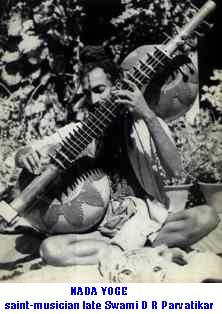
NADA YOGA AND PHILOSOPHY
Indian music has its essence in a deep sense of spirituality along with roots in Yoga and Indian philosophy. The theme of the compositions is mostly devotional in nature, and many of them also convey abstruse philosophical concepts in a form that is easy to grasp. Music itself, when practised with commitment, is also a form of Yoga. Music has a tremendous effect on the mental state of human beings as it results in peace, concentration, relaxation, spiritual elevation etc, which are the principles of Yoga and meditation. The practice of Yoga techniques, such as breath control and mental concentration, are also closely allied to the study of instrument vocal music.
According to Hindu philosophy, the word for pure sound is Nada Brahma. Nada has also been described by some as the energy of Brahma and it is believed that the propitiation of Nada leads to the attainment of Moksha (salvation), which is the ultimate goal of human life. Matanga has described Nada in his Brihaddesi thus:
„There is no song or music without Nada, there are no musical notes without Nada, there is no dance without Nada and the world is filled with the essence of Nada“.
The word Nada refers to the physical, the mystic and the religious or the cosmic sound. The sound that is produced by musical instruments is an object of sensory perception, as it is grasped by the sense of hearing. This is called Ahata Nada. In this context, the human voice is also a musical instrument. As described by Dr Acharya Trigunateet Jaimini in the composition, Sobhillu Saptaswara, the entire body, including the abdomen (Nabhi), heart (Hrt), neck (Kantha), mouth (Rasana) and nasal passages (Nasa), aids in the production of the sound.




